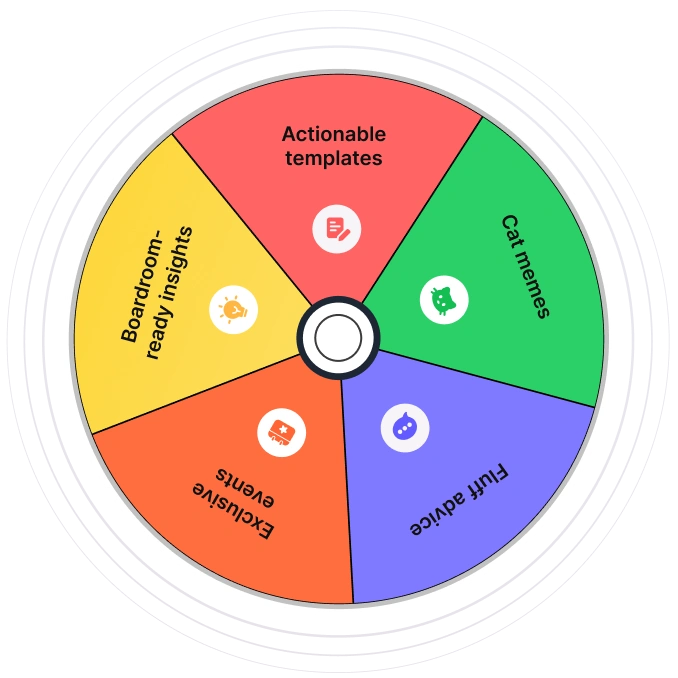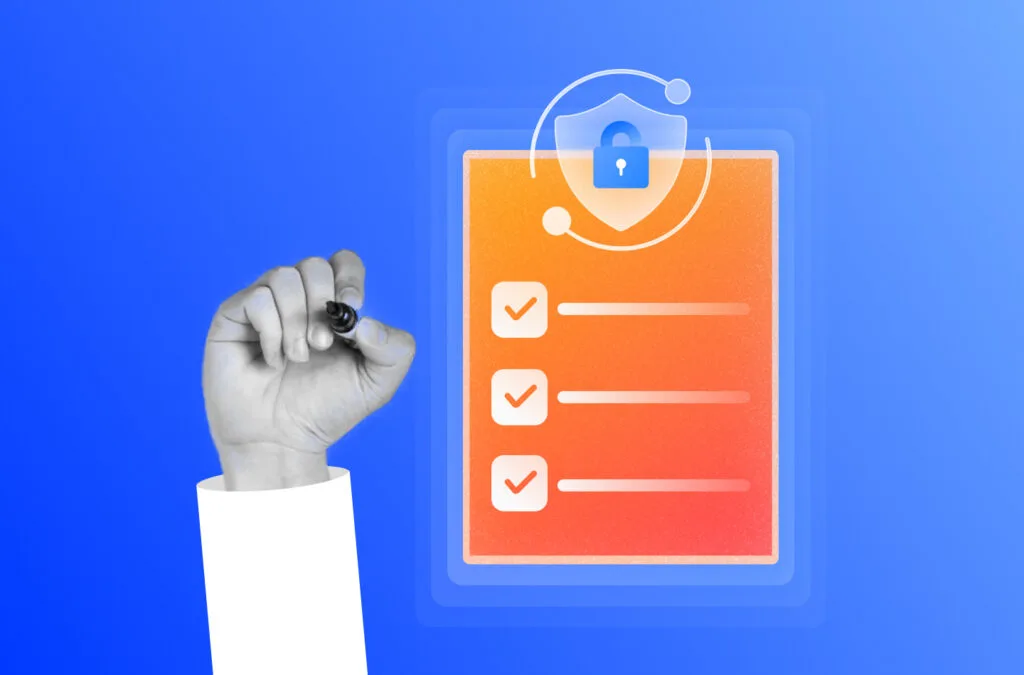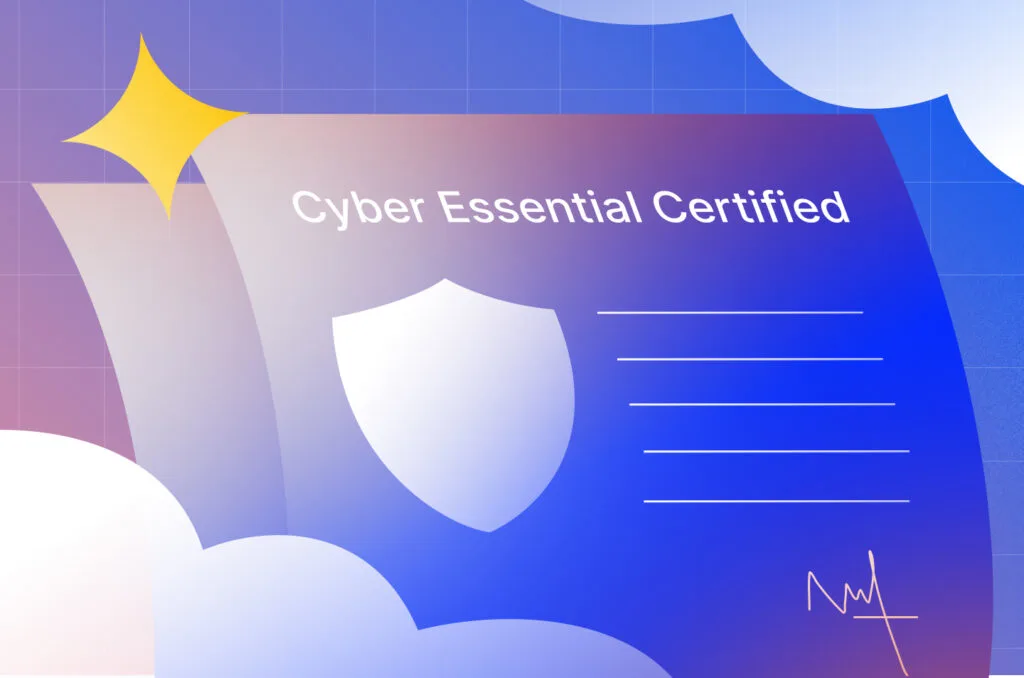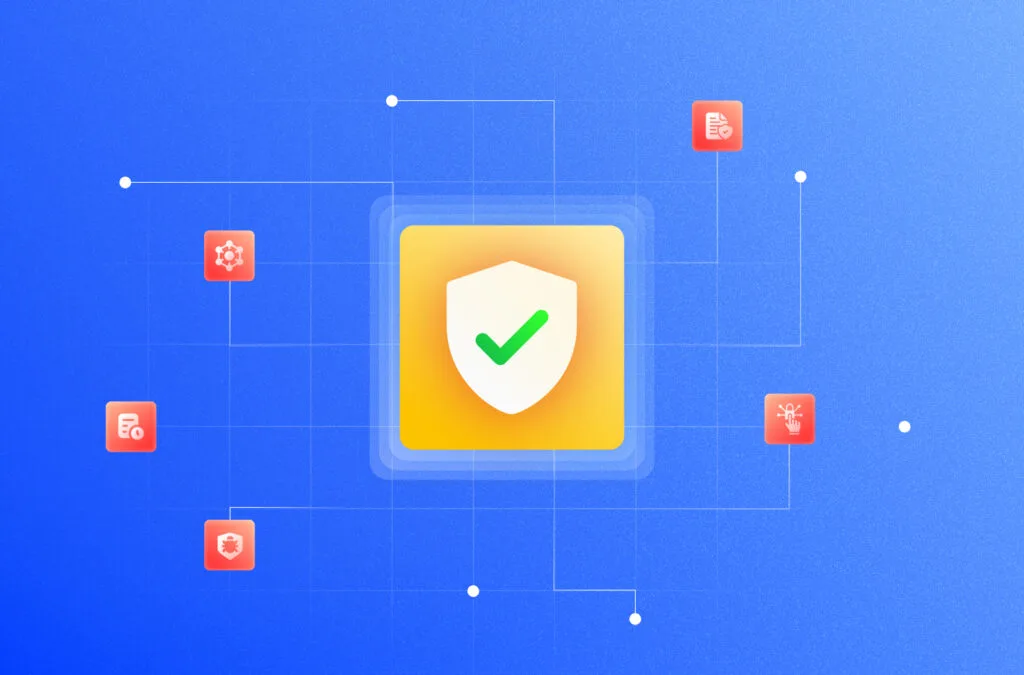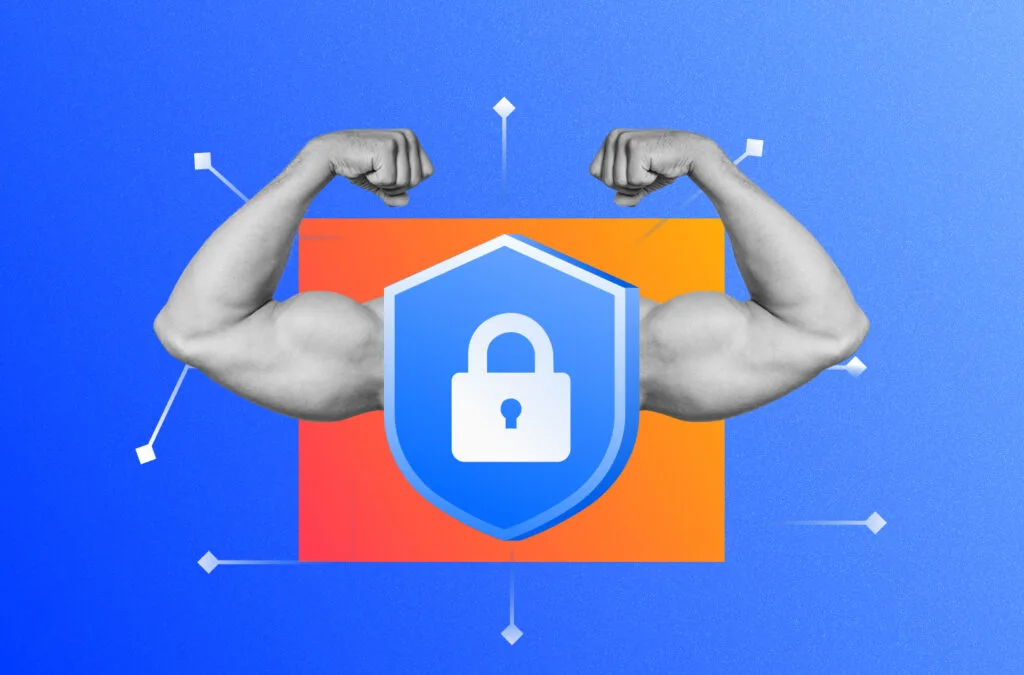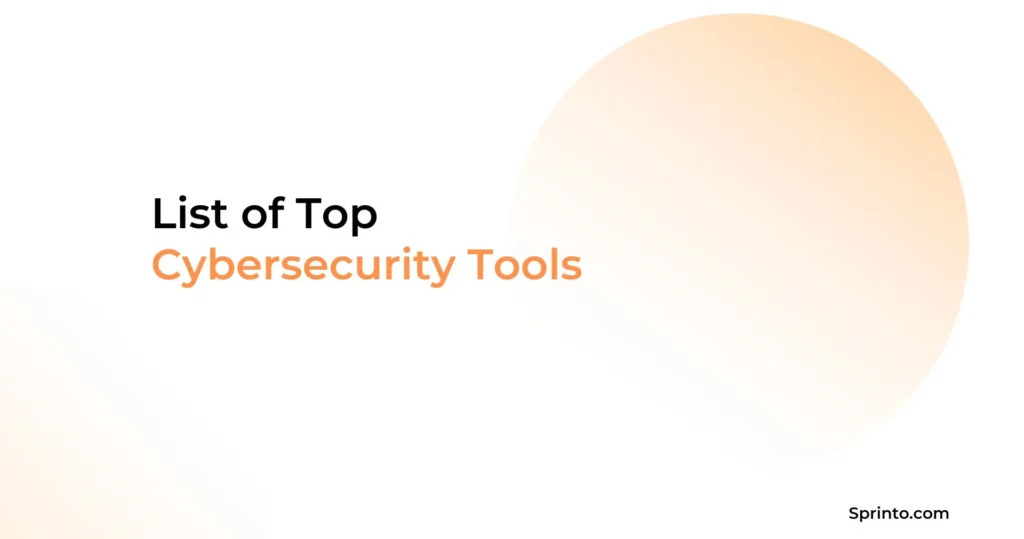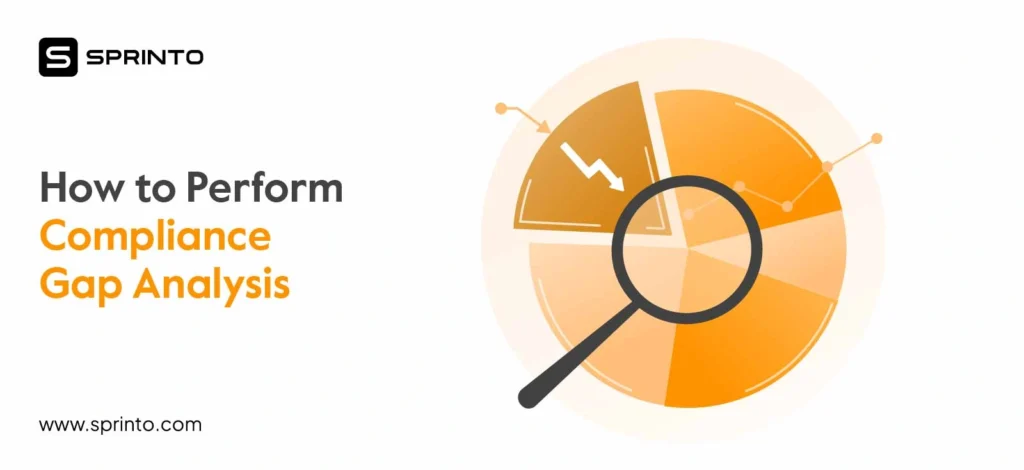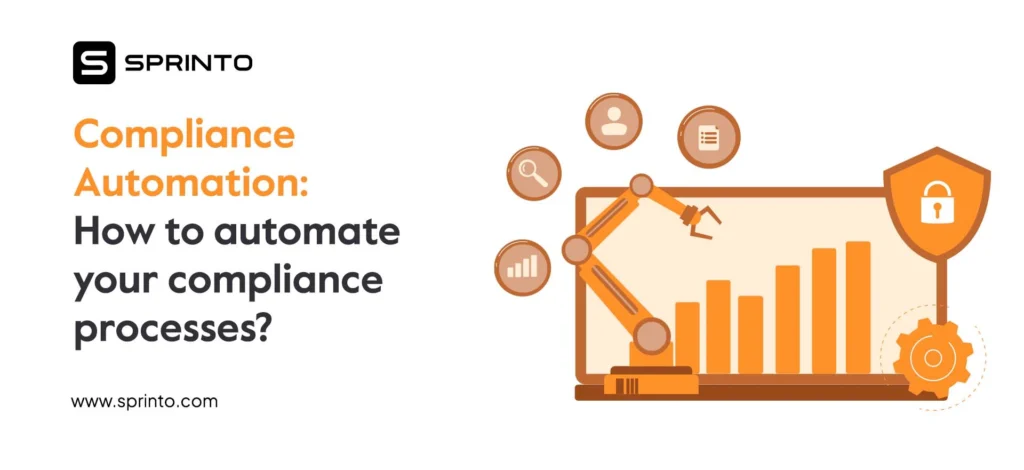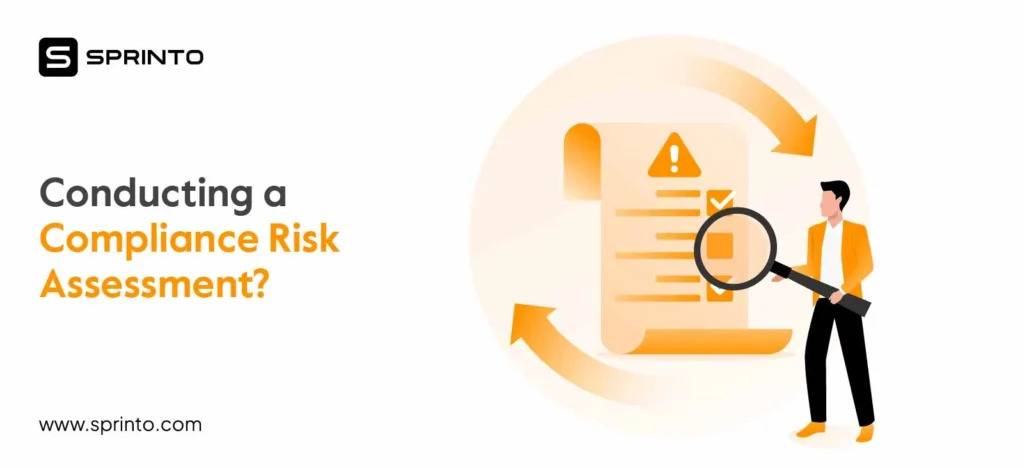The advancement in technology has given rise to a multitude of cyber threats not just for individuals but for companies as well. As of 2023, hacker attacks occurred every 39 seconds and the cost of a breach was $4.45 million, the highest ever recorded. Cyber security has therefore become an increasingly prominent priority recently—and rightfully so.
Cyber security compliance is crucial because it builds a solid security foundation, promotes best practices, and guides organizations in developing a thorough security program. However, for businesses, navigating compliance can be quite complex. Let’s explore this topic in more detail.
What is cyber security compliance?
Cybersecurity compliance is the systematic approach that companies take to aligning with rules and complying with the standards set by various authorities, laws, or regulatory bodies. It requires security teams to take a risk-based approach and implement measures that protect the three fundamental aspects of information—Confidentiality, Integrity, and Availability.
Often referred to as the CIA triad, these elements form the foundation of information security. By achieving compliance, organizations demonstrate that they have established the necessary safeguards to protect themselves against cyber threats and maintain a strong security posture.
Cybersecurity compliance protects your business against cyber threats. Common compliance standards like ISO 27001, NIST, and SOC 2 provide controls to safeguard your systems and data from potential breaches and vulnerabilities.
Importance of cyber security compliance
Cybersecurity compliance standards provide a structured approach to protect sensitive customer information and thereby help build market reputation and trust. It signals the organization’s commitment to ensuring secure business practices and minimizes the chances of data breaches.
SMBs are frequently targeted since cyber security isn’t the most pressing demand at that stage. This makes it simpler for hackers to exploit weaknesses and carry out harmful, expensive cyberattacks.
Cyber compliance especially helps small businesses since complying with a pre-defined set of rules is easier than building a big security team for their cyber security needs.
Here are the four reasons why cyber security compliance is important for organizations:
Guards their reputation
A cyberattack can result in the theft of sensitive information, the disruption of business operations, unwanted media attention, a loss of customer confidence, and legal ramifications. It could take a long time and a lot of effort to fix the damage.
Keeps clients’ or customers’ trust
Having a good security posture and compliance proves that a business is handling its customer’s data securely. It indicates well designed and implemented internal controls and makes it easier to enter into enterprise contracts.
Keean Schupke, Co-Founder, Risr/ notes,
“At Risr/, we understand the importance of building a secure platform that our customers can trust. Achieving ISO 27001 certification would be a key step in this mission”
Being an IT solutions business hosted on cloud, getting ISO compliant was paramount for Risr/ to close sales targets while upholding highest security standards. They were successful in achieving this with only 10 sessions with Sprinto.
“Sprinto guides us on how to set up our code repositories, continuously monitors them, and alerts us with remediation steps if any issues arise. Thanks to Sprinto, we’ve established a security-first and compliance-friendly culture at risr,”
Assists in recognizing, interpreting, and preparing for possible data breaches
When complying with a compliance framework, companies need to prepare for possible data breaches and other cybersecurity risks. Making these strategies helps them to be secure in the future as well.
Enhances a company’s security posture
Getting compliant takes a lot of effort and focus on security. Once a company is compliant, its overall security stature rises.
Many of these advantages have a direct bearing on an organization’s financial health. It is widely accepted that establishing a solid reputation, winning over customers’ confidence and loyalty, and upholding trust are essential elements in achieving success.
Fast-track your compliance journey with Sprinto
Types of Data Subject to Cybersecurity Compliance
Cybersecurity laws focus on protecting sensitive information and can vary based on industry, geography, or legal requirements. Types of data that is subject to cybersecurity compliance include:
Personal Identifiable Information (PII)
PII is the information that can be used to determine a person’s identity. It includes details such as names, social security numbers, addresses, phone numbers etc. The information is sensitive and must be collected, secured, and transmitted securely. Regulatory laws like GDPR (General Data Protection Regulation) govern the protection of PII.
Protected Health Information (PHI)
PHI is a person’s health-related information such as patient names, medical history, prescription details, insurance records, etc. that is collected by covered entities or business associates. Covered entities are healthcare providers, clearinghouses etc. that directly deal with ePHI and business associates are service providers for covered entities ( such as IT services) that indirectly handle ePHI.
Financial information
Financial information includes credit card numbers, CVV, bank account information, credit ratings and any such data that is confidential. Organizations that handle sensitive financial information such as payment processors, financial institutions etc. are subject to laws such as PCI DSS (Payment Card Industry Data Security Standards) to protect the privacy of individuals.
Other sensitive information
Any other sensitive information that is highly confidential or personal is subject to cybersecurity compliance. Examples of such information include IP addresses, Emails, race, religion, biometric data, marital status etc.
5 Steps to get started with a cyber security compliance
Creating a cyber security compliance program and getting compliant is a process that differs from organization to organization. However, here are the general guidelines to get started with your cyber security compliance program.
Here are five steps to cyber security compliance:
1. Identifying your data type and requirements
It’s important to know what kind of data you’re processing and storing, as well as the states, territories, and nations in which you do business. Certain categories of personal information are subject to additional controls under numerous compliance obligations.
2. Putting together a compliance team
Creating a compliance team is essential when putting an extensive compliance program in place. Also, for an organization to keep a strong cyber security posture and support compliance procedures, it becomes important for every department to contribute equally.
3. Run risk and vulnerability analysis
Risk and vulnerability assessments are necessary to comply with almost every significant cyber security compliance requirement. These are crucial in identifying the most serious security issues in your organization and the controls you already have in place.
4. Setting controls to manage risks
The next stage is to implement security measures that alleviate or transfer cyber security risks. Cyber security control is a method for preventing, detecting, and eliminating threats and cyberattacks. Technical controls, like passwords and access control lists, or physical controls, like fences and security cameras, can be used as controls.
5. Monitoring and immediate response
Maintaining constant oversight of your compliance program is essential as new rules or revised versions of old policies are released. A compliance program’s objective is to recognize and control risks, as well as to identify and stop cyber threats before they result in a significant data breach. Additionally, it’s crucial to have business processes in place that let you respond rapidly to threats.
As you can see, starting a cyber security compliance program is a sophisticated task that consumes money and resources from your valuable workforce. To overcome this shortcoming, you can use a compliance automation solution such as Sprinto.
Sprinto is a compliance automation solution that lets you get compliant in a matter of days compared to months. It supports all the major cyber security regulations so that you can choose what suits you the best.
If you want to learn more about how compliance can benefit your business specifically, talk to our experts here.
Types of cyber security compliance regulations
There are a plethora of cyber security compliances but typically, a business deals with only a few.
Here are the 8 major cyber security compliance regulations:
1. SOC 2
Service Organisation Control 2 (SOC 2) is a type of audit report that assesses the safeguards and procedures put in place by service organizations to safeguard client data and information.
SOC 2 is based on the Trust Services Criteria issued by the American Institute of Certified Public Accountants (AICPA). The requirements for SOC 2 compliance cover security, accessibility, processing integrity, confidentiality, and privacy.
2. HIPAA
The Health Insurance Portability and Accountability Act (HIPAA), in the United States, is a federal law that was passed in 1996 to safeguard the confidentiality and security of personal health information.
Healthcare providers, health plans, and other covered entities are required under HIPAA to put in place specific security measures to preserve the integrity and confidentiality of patient protected health information (PHI). This comprises administrative, technical, and physical security measures like encryption, password security, access controls, and recurring security risk evaluations.
All healthcare providers, health plans, and clearinghouses that electronically transfer PHI are subject to HIPAA, as are any of their business partners who have access to PHI. Failure to comply with HIPAA standards can result in hefty fines and legal consequences.
3. PCI DSS
Payment Card Industry Data Security Standard (PCI DSS) is a set of regulatory standards that ensures all organizations maintain a secure environment for credit card information. To be compliant, organization compliance must be validated annually.
PCI DSS non-compliance can lead to hefty fines, higher transaction costs, lost income, and reputational harm for a corporation. In order to ensure compliance with the standard, it is crucial for organizations that handle credit card information to take the necessary measures.
4. ISO 27001
ISO 27001 is a standard that specifies a framework of best practices and procedures that organizations may apply to manage information security risks and secure sensitive information.
The standard mandates businesses to create and implement a methodology for detecting, evaluating, and managing information security risks. Additionally, in order to reduce these risks, it also specifies that organizations install a series of security procedures.
5. GDPR
General Data Protection Regulation (GDPR) is a data protection and privacy regulation that governs the usage, processing and storage of personal information of European Union citizens. It requires businesses worldwide to implement necessary technical controls to ensure the confidentiality, integrity and availability of data.
GDPR encourages privacy by design which means that security must be tightly integrated in service design followed by secure implementation. It also grants individuals the right to access, restrict or get the data erased if the situation deems fit.
6. NIST
NIST Cybersecurity Framework (CSF) is a set of guidelines and cybersecurity pr
actices established by NIST (National Institute of Standards and Technology)- a non-regulatory agency of the U.S. Department of Commerce. It is a voluntary compliance standard that can be tailored to specific business contexts and security requirements.
NIST CSF focuses on risk-based cybersecurity management and advocates 5 functions—, protect, detect, respond, and recover to aid organizations in minimizing security risks.
7. CCPA
California Consumer Protection Act is yet another data privacy law that safeguards personally identifiable information of California consumers. Businesses are required to implement safeguards to protect customer’s information from unauthorized access or disclosure.
CCPA grants individuals the right to opt out of the sale of personal information and businesses cannot discriminate against such individuals who exercise their rights.
8. CMMC
Cybersecurity Maturity Model Certification is a compliance model structured by the United States Department of Defense. It aims to ensure the information security of Defense Industrial Base (DIB) from cyber attacks by protecting sensitive unclassified information shared with contractors/subcontractors.
The framework establishes cybersecurity standards that must be implemented by organizations handling national security information.
Automate compliance with real-time reports: Sprinto
Cybersecurity compliance is no longer a checkbox exercise. As the threat landscape evolves and regulations become more stringent, organizations must embrace a proactive approach to securing their data.
The future of cybersecurity compliance hinges on continuous adaptation. By leveraging automation, embracing a risk-based approach, and prioritizing user education, organizations can build a robust security posture that helps them scale faster.
A GRC (Governance, risk, and compliance) solution such as Sprinto automates the complete process of attaining compliance without disrupting your present business operations.
Sprinto integrates with your company’s digital infra and maps compliance requirements to security controls to give you a granular view of your business’s security posture. It provides you with compliance health reports and gap reports for real-time insight into your cybersecurity stance.
A future-proof approach like this will not only safeguard sensitive data but also foster trust with customers, partners, and stakeholders. As the saying goes, an ounce of prevention is worth a pound of cure – and in the ever-evolving world of cybersecurity, proactive compliance is the ultimate preventative measure.
Continuous Compliance for 24/7 Peace of Mind.
Frequently Asked Questions
Cyber security is the practice of safeguarding any computer system, network, or digital asset from unauthorized access and misuse. On the other hand, cyber security compliance is about adhering to a set of rules laid by an independent authorized institution.
The 5 C’s of cyber security mostly tell you about the steps needed to protect your data from any cyberattack. Here are all of them, confidentiality, integrity, availability, authentication, and authorization.
To ensure continued adherence to the necessary standards and laws, cybersecurity compliance should be evaluated regularly. Periodic internal audits, vulnerability analyses, penetration tests, and external audits carried out by impartial third parties might all be involved in this.
The purpose of cyber security compliance is to adhere to industry-specific standards, ensure security best practices, safeguard sensitive information, adapt to emerging threats and facilitate business continuity.
Compliance in cyber security is the adherence to information security and data protection laws and mitigate legal and financial risks associated with non-compliance. The frameworks require organizations to follow security best practices and implement relevant technical controls to safeguard information assets. Examples of cyber security frameworks include GDPR, HIPAA, and more.
Shivam Jha
Shivam is our in house cybersecurity sage with over six years of experience in cybersecurity under his belt. He is passionate about making the digital world safer for everyone and whipping up Indian delicacies on the weekend.
Explore more
research & insights curated to help you earn a seat at the table.







